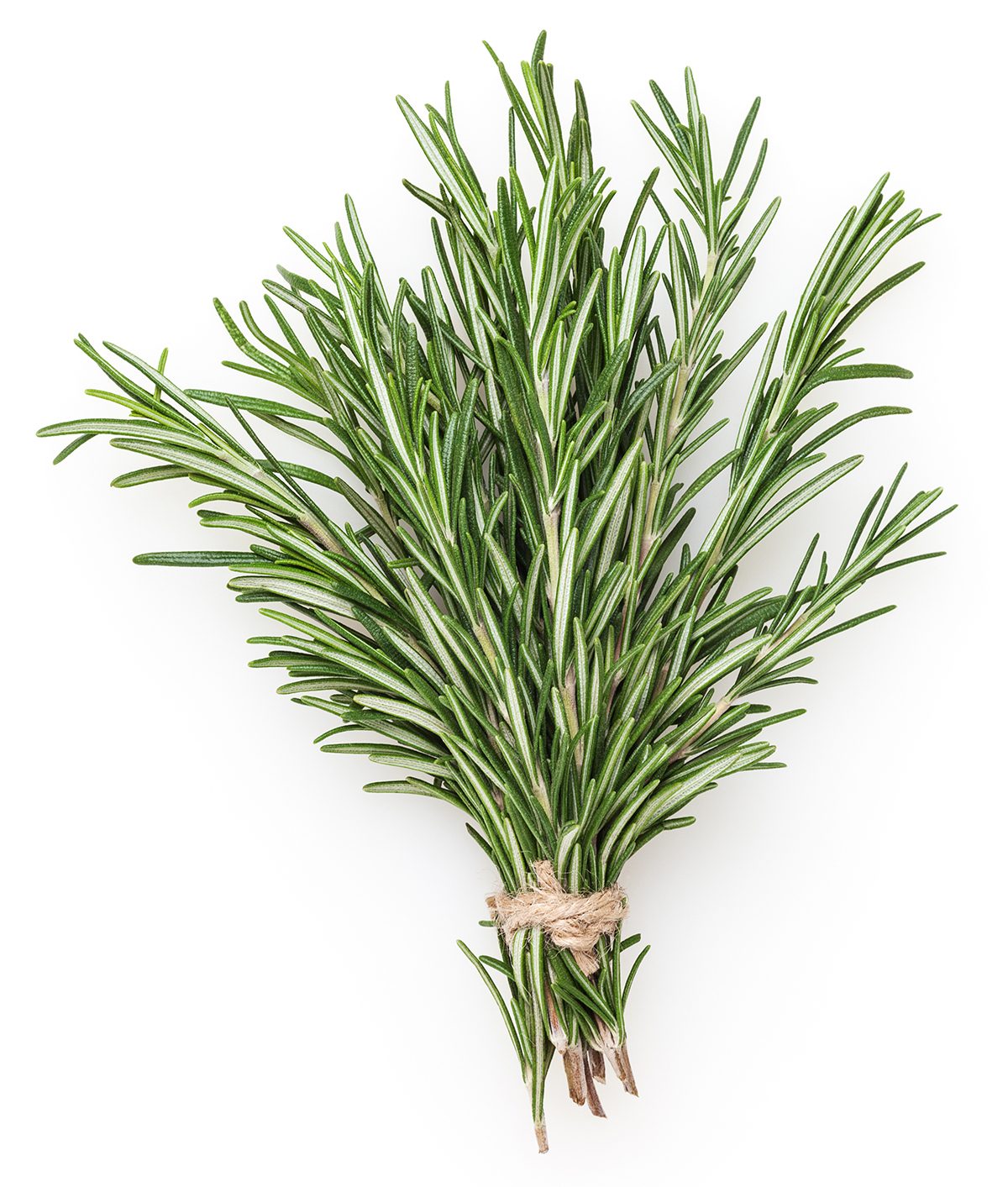Plant-Based Boosting & Masking - Part 2
Technologies
Botanicals can be powerful tools for boosting flavor and masking off-flavors.
Modifying Flavor with Biodiversity
The Green Team
Rosemary has a robust, pine-like flavor that enhances savory dishes and masks off-flavors. Its strong aromatic profile makes it a favorite in Mediterranean cuisine. For example, in roasted lamb dishes, rosemary is often used to complement the meat’s natural pungent flavor while masking any gamey or off-putting notes. The result is a succulent and flavorful dish that highlights the richness of lamb.
Rosemary extract often is used in meat and poultry formulations for its natural antimicrobial capacity. In this manner, it can provide a slight flavor enhancement while extending shelf life. It is especially effective in prepared meats such as cured meats, bacon, and deli meats. So, too, is extract of celery. Celery is high in natural nitrites and can be used as a natural substitute for sodium nitrite.
New flavor boosters and maskers are taking a natural turn drawn from ancient culinary traditions. Video courtesy of Getty Images/Wavebreakmedia
By Kerry Hughes, MS, Contributing Editor

Rosemary contains rosmarinic acid, proven to be a powerful natural preservative of flavor and freshness in savory products from poultry and processed meats to baked goods. Photo courtesy of: Blue California, Inc./iStock
Mint is both a strong flavor modifier and a cooling agent. It adds freshness to savory dishes (such as South Asian and North African rice dishes, or red meat preparations, notably lamb). In beverages and confections, it adds flavor and enhances sweetness.
Mint's abilities to help beverage flavors are best displayed in drinks such as mojitos and mock mojitos. The mint flavors both boost and moderate the sweetness of the sugar while softening the lime’s tartness, creating a balanced and refreshing drink. The cooling effect of mint also adds an exciting dimension to drinks, especially iced tea beverages, countering the brisk tannins with cool invigoration—ideal for warm climates and seasons.
Tarragon is another green enhancer that aids in savoriness. It also can double as a masker of less-desirable flavors. With its slight licorice-like flavor, tarragon is well known in French culinary traditions for adding an unmistakable flavor note that reduces overpowering flavors such as sulfur in egg dishes, iodine in fish preparations, and gaminess in poultry and meats. In sauce Béarnaise, tarragon enhances the savory notes while masking potential bitterness from the vinegar and shallots. This creates a classic, smooth and flavorful accompaniment to steak and other meats.
Savor This
The savory ingredients market is expected to close out this year at US$9.4 billion, based on research by Markets and Markets Research Pvt., Ltd. The category includes ingredients that, according to the study, “are widely used in the food industry to add richness, depth, and complexity to dishes, thereby catering to the evolving preferences of consumers.” The study’s authors noted also that the results reflect “a remarkable growth projection” and anticipate sales to reach US$12.1 billion by 2029, at a CAGR of 5.2%.

Chili peppers are a triple-action botanical, a natural enhancer, masker, and “bridge” flavor that can boost sweetness while imparting piquancy without clashing with other flavors. Photo courtesy of: Flavorchem, Inc.
Chili Peppers, the Savory Savior
Chili peppers, fresh or dried, are a prominent ingredient in many global culinary traditions. Not only are they deployed to add heat and complexity to foods, they have long been recognized for their preservative function due to their antimicrobial properties. More importantly, they enhance savory flavors and mask off-flavors, especially when smoked.
On top of the flavor spike they bring to soups, stews, chilies, and sauces, they contribute well-studied health benefits, especially in terms of cardiovascular health. These are derived from capsaicinoids, flavonoids and other polyphenols, as well as other bioactive compounds.
In a chili formulation, smoked chili peppers add a rich depth of flavor that enhances the dish’s savory components while countering the acidic notes from ingredients such as tomatoes. The heat from the chili peppers also creates a more robust and flavorful profile.
Dried chili peppers, such as ancho (smoked poblano) and chipotlé (smoked jalapeño) build multiple layers of flavor during their smoking and drying processes. Ancho peppers offer a mild, sweet heat with fruity, chocolatey undertones, while chipotle peppers provide a deep, smoky flavor with moderate heat. In fact, smoked chili peppers such as ancho and chipotle can add a boost of umami to vegetarian recipes.
The interplay of these chili peppers with other ingredients is especially evident in molé sauces. These often combine ancho and chipotle peppers with cacao and cinnamon to create a highly complex, rich sauce that highlights the complex flavors of the dish. Of special note, the underlying sweet notes in ancho chili peppers have often found their way into confectionary, ranging from cheesecakes to pastries to preserved mangos. End of Part 2
Kerry Hughes, MS, principal for EthnoPharm, is a frequent contributor to the Prepared Foods network. A nutrition science expert and ethnobotanist, Hughes has a 20-year record of success in natural product development and reformulation, especially in the application of better-for-you nutraceutical botanicals. EthnoPharm specializes in innovative product formulation, education, and nexus-of-market opportunity identification. She can be reached at kerry@ethnopharm.com.



